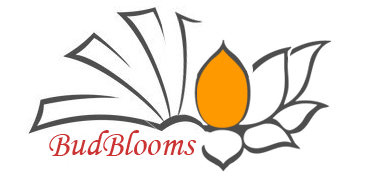Books

Broken Buddha
There is no law in history which guarantees that Buddhism will grow roots in the West or advance beyond its present infantile stage. But one would expect that it will grow more conscious of its own difficulties and Buddhists will awaken to the problems which Buddhism itself thrusts upon man as an essential part of its treasure. One would also hope that doubt should appear as the sign of a deeper conviction. – Luis O. Gomez
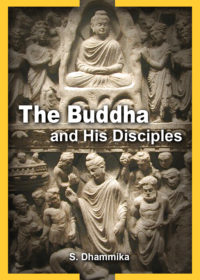
Buddha and His Disciples
The life of the Buddha is more than an account of one man’s quest for and realization of the truth; it is also about the people who encountered that man during his forty five year career and how their encounter trans-formed them. If the Buddha’s quest and his encounters with others is set against the backdrop of the world in which these events were acted out, a world with its unique customs, its political intrigue and its religious ferment, it becomes one of the most fascinating stories ever told.
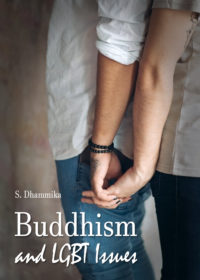
Buddhism and LGBT Issues (pdf)
Before starting it will be necessary to make it clear what is meant by Buddhism in this article. As with other religions, Buddhism has a long history during which it has developed and evolved, branched into divergent schools and sects, and been interpreted in various ways by different philosophers, reformers and saints. And as with other religions it is not always easy to get agreement by Buddhists on every issue. However, Buddhism started with the experience of a particular individual, Siddhattha Gotama, and at a particular time in history, the 5th/ 4th century BCE. Without going into the complexities of the issues, this article takes the position that the earliest and therefore the most authentic account of the Buddha and his teachings is contained in the Pali Tipitaka, the huge body of literature now considered canonical by the Theravada school of Buddhism. While this article deals mainly with homosexuality it will also make some references to related states, gay adoption, transgenderism, etc.
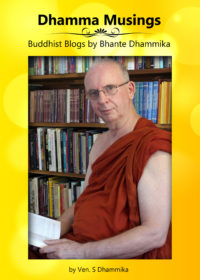
Dhamma Musings (pdf)
Between 2008 and 2017, Bhante Dhammika maintained a blog commenting Buddhist doctrine, Buddhist culture and art, and current affairs from a Buddhist and sometimes a personal perspective. At its height it got some 12,000 visits a day. This eBook has a selection of what is some of the more interesting blog posts.
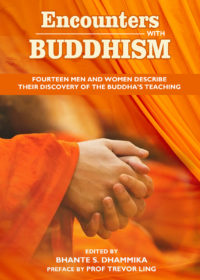
Encounters with Buddhism
Fourteen writers here describe how they came to be Buddhists. Men and women of different nationalities: each tells the story of his or her encounter with Buddhism and of how they became a Buddhist. Together they form an interesting and significant piece of documentation of what are undoubtedly some important ethical, religious and philosophical trends among Buddhists in the latter half of the twentieth century.
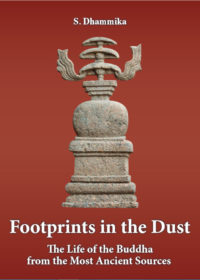
Footprints in the Dust: The Life of the Buddha from the Most Ancient Sources
What was the Buddha like as a human being? How did he relate to others? With great care and an eye for detail, Venerable Dhammika pieces together the life events we can ‘read’ from very early texts. The result is a truly authoritative biography. It shows that as a man, as well as a teacher, the historical Buddha was remarkable indeed. The chapter headings are refreshingly original: a day in the life of, his humour, his debating style, his background. I really enjoyed thinking about Gotama Buddha simply as a person—and clearly an extraordinary one, as Ven Dhammika shows us. I recommend this book to anyone who would like a down-to-earth, accurate and readable appraisal of the founder of this great world religion, seen through modern eyes.
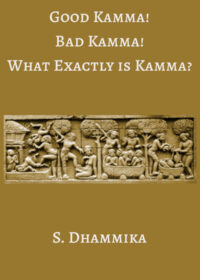
Good Kamma! Bad Kamma! What Exactly Is Kamma?
Today, the information in most books on kamma and rebirth by Buddhist writers are actually an amalgam of ideas the Buddha taught together with ones that developed sometimes centuries after his passing. And it is all presented as if it were the words and ideas of the Buddha himself. This would be equivalent to quoting Aquinas or Kierkegaard and attributing it to Jesus. Often, what is presented as the Buddha’s teaching of kamma and rebirth is actually the ideas from the Milindapañha written perhaps 400 or 500 years after the Buddha, of Buddhaghosa who lived some 900 after him, or Anuruddha, the author of the Abhidhammatthasaṅgaha, who lived about 1400 years after him. This is not to say that these later ideas are necessarily wrong. Some of them help to clarify things the Buddha said or take them to their logical conclusions. But they are all the product of scholarly speculation and hypothesizing, while what the Buddha taught was the outcome of his awakening experience. Thus this book will look at kamma and rebirth based on how these doctrines are presented in the Pāḷi Tipiṭaka, the oldest and most authentic record we have of the Buddha’s teaching.

Good Question
QUESTION: What is Buddhism?
ANSWER: The name Buddhism comes from the word budhi which means ‘to wake up’ and thus Buddhism can be said to be the philosophy of awakening. This philosophy has its origins in the experience of the man Siddhattha Gotama, known as the Buddha, who was himself awakened at the age of 35. Buddhism is now more than 2,500 years old and has about 380 million followers worldwide. Until a hundred years ago Buddhism was mainly an Asian philosophy but increasingly it is gaining adherents in Europe, Australia and the Americas.
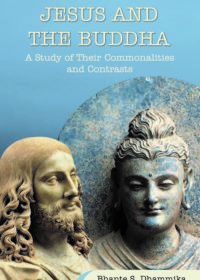
Jesus And The Buddha
During the last hundred years it has increasingly been said that all religions are actually pointing to the same reality. Now there are numerous books claiming that the teachings of Jesus and the Buddha are just different versions of the same truth. Is this true or is it the outcome of a superficial examination of the facts or perhaps a genuine but misguided attempt to encourage inter-religious understanding? This book is the first in-depth comparison of the life and teachings of Jesus and the Buddha and presented in the New Testament and the Tipitaka, the Buddhist scriptures. The result is portraits of the two great religious figures very different from how they have traditionally been seen and the question ‘Are Christianity and Buddhism compatible?’ is answered in a way that may surprise many readers. Bhante Shravasti Dhammika is well placed to write this comparative study having been brought up a Christian and later becoming a Buddhist and a monk.
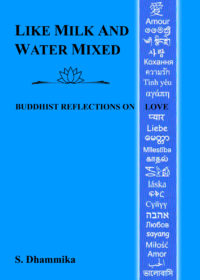
Like Milk and Water Mixed
Love is not necessarily an easy subject to write about. Studies of the subject by philosophers, psychologists and sociologists usually focus on one or another of its forms, most commonly romantic or conjugal love, and often use the word “love” without making it clear what is meant by it. Popular writing and discourse on the subject characteristically get lost in flood of clichés and ecstatic claims that evoke uplifting feelings but do not necessarily encourage realistic thinking. I have tried to define love in a way that will be recognisable to most people and which encompasses most of the experiences usually thought of as love. I had originally intended to write mainly about universal or brotherly love, what the Buddha called mettā. But it soon became clear that this highest of loves is intimately connected with and perhaps necessarily preceded by other types. It is like pulling a thread out of a tapestry. As it comes it draws out so many other threads with it. Thus I was eventually led to explore six different loves. I could have included other types as well but decided to limit myself to those loves about which the Buddha had something to say or which are relevant to practising Buddhism.
